Pixiebob: features of the breed of cats and their conditions
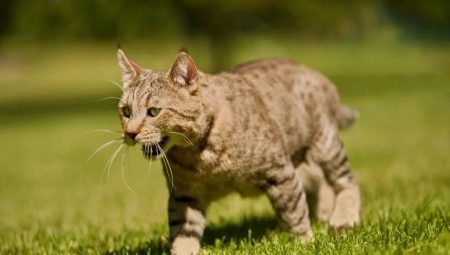
Pixiebob is a breed of domestic cats that has won the love and recognition of millions of fans. Today, this exotic handsome man is considered a national treasure of the inhabitants of the United States of America. The cat, called the "short-tailed elf", has a number of distinctive characteristics in terms of appearance and conditions of detention.
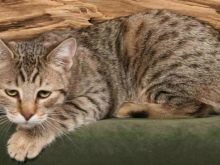
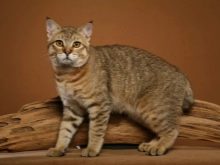
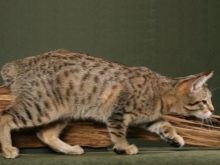
Origin story
Disputes about the origin of the exotic cat, resembling a small lynx, do not stop to this day. Someone thinks that the appearance of unusual cats was the result of a random mutation, others deny it. In their opinion, the breed is considered artificially bred, the breeders wanted to create a domestic cat with the appearance of a lynx. The USA is considered the birthplace of pixiebob: there is an opinion that the first individual was born as a result of mating a male red lynx and a short-tailed cat.
It is likely that the ancestors of the breed could be a cat with extra toes and a cat with a short tail. This explains the multi-toed and short tail of the kittens being born. The traits inherited in each generation refute the version of a random mutation, because then not every kitten had many fingers and a short tail. By the way, "bob" (the second part of the breed's name) speaks of a short tail length.
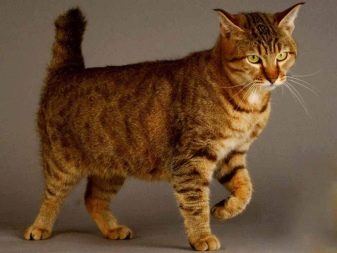
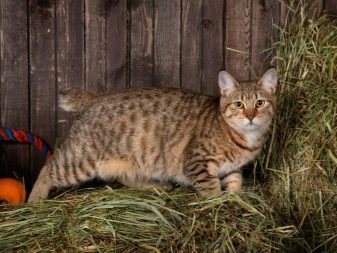


One of the most plausible versions is the opinion that the breed appeared thanks to the breeder Carol Ann Brever. Like many other experts, she tried to breed a cat with the appearance of a lynx and the character of a pet. The kitten was the result of an experiment, it made a splash among breeders and was soon registered by the TICA and ACFA associations as a separate species of the feline family.
The female kitten was named "Pixie", which means "elf". Outwardly, the female looked like a lynx, but smaller. Breeding of a new breed was started from her. This version of the origin of purebred cats today is overgrown with legends, according to one of which the mating of a lynx was carried out with an ordinary domestic cat. However, if this were true, the kitten would be born with a full tail.
Description
Pixiebob is much larger than a regular house cat. Its distinctive features are the absence of a long tail and intolerance to long journeys. For this reason, a cat is rarely taken out of the country, and therefore it is almost impossible to buy such a cat from us. These cats are rare breeds, the animal population is limited.
The short-tailed elf is characterized by a powerful and muscular build. This is a rather large animal, it has a powerful chest, an even back and slightly protruding shoulder blades. There is a small fold of skin on the abdomen of these cats, which is associated with excess skin in this part of the body. An adult cat can weigh between 5 and 7 kg. Cats weigh more - their weight often reaches 10 kg.
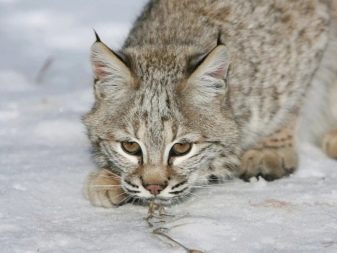
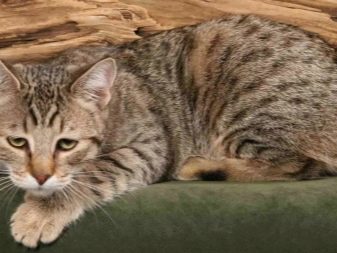
Despite such weight, animals easily climb trees, overcoming heights by jumping, like their forest cousins. Polydactyly on the paws (multi-toes) is considered a hereditary trait of a representative of the breed: the standard of multi-toes can be up to 7 fingers, which is considered the norm. It is believed that polydactyly cats are more resilient.
The cat, indeed, resembles a lynx, which, in addition to a short tail, is evidenced by the tassels on the tips of the ears, powerful paws with rather developed muscles. The length of the animal's tail usually does not exceed 5 cm, the color of the cat is usually sandy-brownish with dark markings all over the body. The pads of the fingers of this cat are dark, the head is large, pear-shaped.
The muzzle itself is wide, the pixiebob's ears are rounded at the ends, some representatives of the breed have sideburns (typical for long-haired elves). These animals have a large chin covered with coarse hair, a massive body and a deep groin line. The short tail is set low, the eyes are almond-shaped, wide and deep set.
The pixiebob's gaze is meaningful: it seems that he is looking into the soul. Due to the dark line near the eyes, a small amount of slyness is given to the gaze.
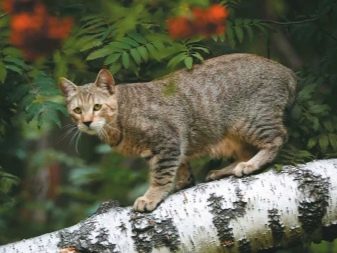
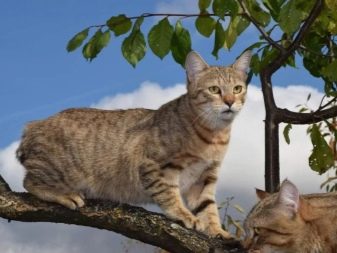
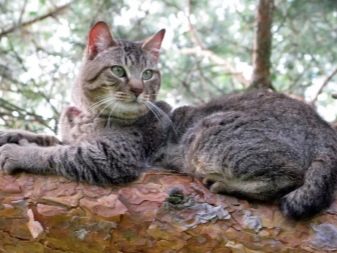
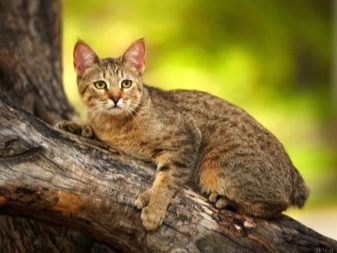
The color of the animals is also noteworthy, which in knowledgeable circles is called ticking. In a pixiebob, the ends of the hairs are lighter in color compared to the color of the base. The same feature is typical for the whiskers and eyebrows of cats of this breed. The tip of the tail is almost always dark or even black. The color of the muzzle is also interesting: it often seems that a dark letter "M" is drawn on the cat's forehead.
As for the weight of individuals, on average a month-old boy kitten weighs 540-960 g, the female's weight at this time varies in the range of 360-830 g. By the end of the second month, the animal's weight doubles: a boy kitten can already weigh 1.1- 1.9 kg, the female will weigh 0.81-1.4 kg. By the end of the first year of life, the weight of a cat will be 4.6-6.5 kg, a cat - 2.7-4.8 kg. A two-year-old animal weighs more: the average weight of a cat will be 5.4 kg, a cat - from 3 to 5 kg.
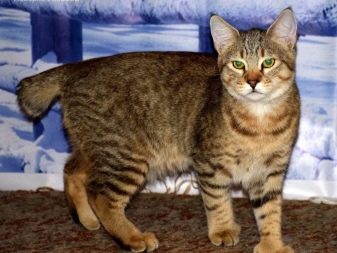
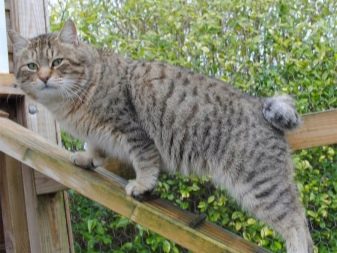
Character traits
Representatives of the domestic lynx breed differ from the eccentric domestic cats in degree and grace. They are regal in everything, have a sense of tact, never impose their society and do not require attention when the owner is not up to them. At the same time, they cannot be reproached for laziness: they are not at all couch bumps, they are quite active and quick. Breeders claim that exotic cats are quite intelligent and understand the intonation of their owners.
Despite their formidable appearance, they are outgoing and friendly. However, none of the representatives of the breed never allow himself to be impudent in relation to the owners. For example, he will not climb on his knees and demand attention without an invitation. However, if you call the cat, he will immediately respond to the opportunity to communicate with the owner or household members. This is explained by a character trait: pixiebob very badly tolerates loneliness and chirps in its own way, meeting the owner after even a short separation.
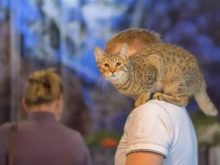
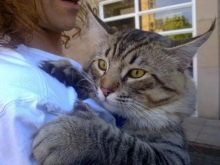
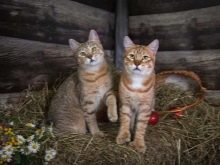
He is sensitive to parting with the owner and a change of scenery. By loyalty, he resembles a dog: the same attentive, kind and gentle. He willingly and without any aggression contacts children and does not harm them, even if the children are flirting. In this case, they do not give back, but prefer to retire. In general, their energy is enough for long-term games with children.
Breeders note that these cats often treat all family members equally, without singling out one person as an object of adoration. They communicate with a person in their own way, making interesting sounds, unlike the usual meow. A unique character trait of such an animal is the ability to adapt to the rhythm of life of the owners. For example, a cat may well sleep peacefully near its owner at night and stay awake during the day.
For them, all family members become "their pack", the cats themselves love to be in the center of events. They miss their families and are waiting for them from work or school. They are very loyal and fun to play. For example, like dogs, they carry their toys in their teeth and very quickly get used to their name, and therefore respond better to their name than to the traditional "kitty-kitty".
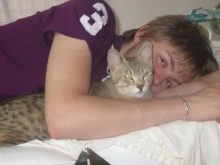
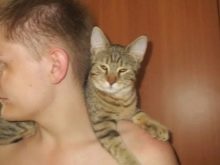
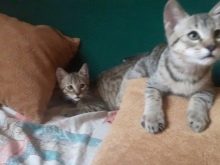
The animal will not allow itself to swear or fight with other pets... It gets along well with other cats or even dogs in the house. Unlike them, he will not be the main brawler, he will show restraint even when the time for feeding comes. As for the period of greater activity, these are the first 4 years: only after so many years the animal is called an adult.
According to some breeders, other individuals of the breed are jealous. This usually happens when they are the only pets in the family. However, if there is a newborn in the house, cats, and especially males, can show parental feelings. This can manifest itself in the desire to be near and to protect the baby, even caring about his peaceful sleep. Often, such cats make "caring nannies" and even "child guards".

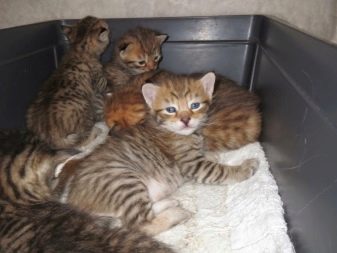
Conditions of detention
Despite the fact that cats are considered unpretentious in care, some nuances have to be taken into account. For example, given the thickness of the coat, you have to deal with it more often, especially in the breed with long hair. This should be done at least once a week with a rubber brush, combing the hair from head to tail. The wool itself is soft and silky; on the belly it is especially fluffy. Extra attention should be paid to combing the coat during the shedding period. At this time, the procedure is done 2 times a week.
Exotic cats are easily trainable and quickly understand what a litter box is. If you accustom them to the litter box from childhood, they will be very neat and tidy. Even after reaching puberty, they will not allow themselves to mark territory or shit in the wrong places. At the same time, raising a cat does not require a global investment of time and effort.
Animals molt 2 times a year: in spring and autumn. As for the nuances of bathing, experts say: you don't need to use soap every time you wash. Sometimes ordinary warm water is enough for washing. It is necessary to accustom an animal to water procedures from childhood.
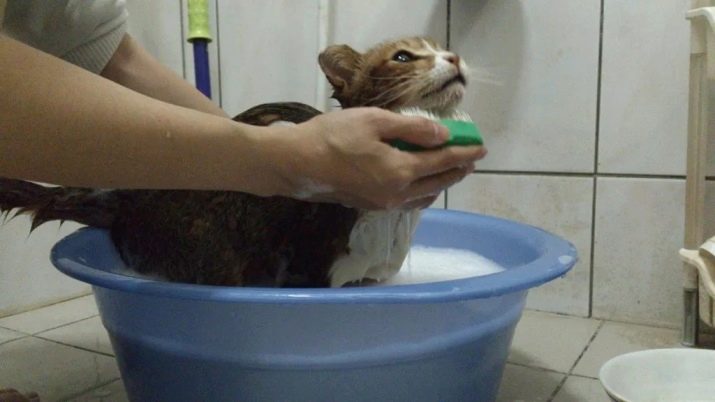
The size of the pet is large, and therefore it will be cramped in small-sized rooms. Ideally, this cat should live in a private home with access to fresh air, where she can walk with her owner. For walking, you need to purchase a special collar.The behavior of a cat on the street is regal: it is not afraid of something new, does not run away out of fear, and therefore the risk of losing it is minimal.
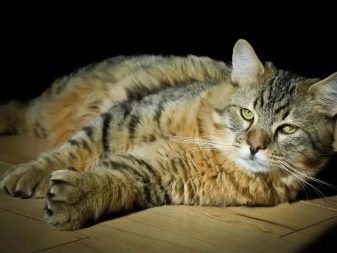
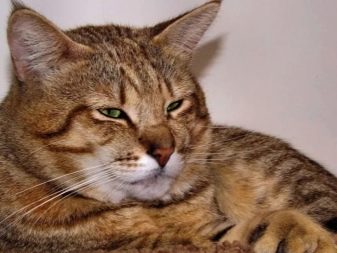
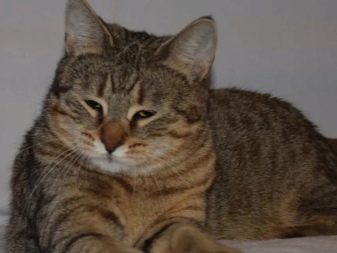
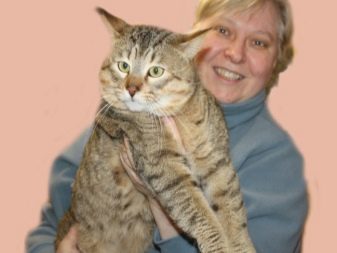
It is worth noting such a nuance as the need for education during the entire period of growing up... During this time, you can teach the cat a name and different commands, she will understand the meaning of some phrases and react to them. In addition, the educational process will prevent aggressiveness, because such individuals are not allowed for breeding by expert felinologists, they do not participate in breeding work.
You can not independently breed the breed: some difficulties prevent this. Felinologists examine the animal to see if it is suitable for procreation.
Although kittens can be born with normal tails, the breed has its own standards. You cannot cross such a cat with ordinary pets, as this leads to the degeneration of the species and the loss of characteristic hereditary traits.
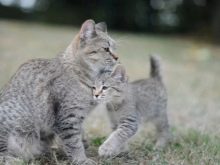

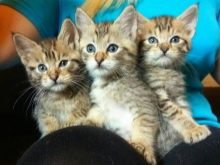
Health
Representatives of the breed are distinguished by excellent health and an average life expectancy of 13 years. Some individuals live longer, while genetically diseases are not characteristic of them. However, the breeder must consider the sensitivity of an exotic cat to some vaccinations, and therefore it is considered mandatory to consult a veterinarian before applying the vaccine. If you monitor the health of an individual, she can live to an old age, which is 15 years.
It is important every time after a walk to examine the animal for the presence of small parasites (ticks and fleas). In order to prevent them, you can buy an antiparasitic collar for your pet. Its action usually lasts a month, after which the accessory is replaced with a new one.
But as some cat breeders note, such a product does not give a 100% guarantee, and therefore a systematic visual inspection is a prerequisite for keeping.
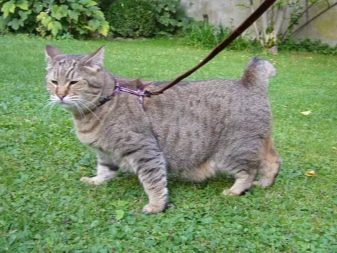
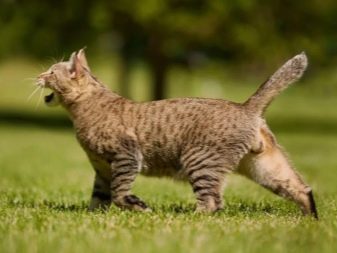
It's important to keep your pet hygienic. As for bathing, it will not be a problem for either the animal or the owner, because Pixie Bob is not only not afraid of water, but also loves to soak in it... Some individuals, like dogs, adore splashing and frolicking in the water. However, frequent bathing is not necessary for a cat, unlike ear and eye hygiene.
Although it is not difficult, it should be regular and correct... To do this, use damp textile wipes or a soft cloth soaked in warm water. They get rid of the emerging contaminants.
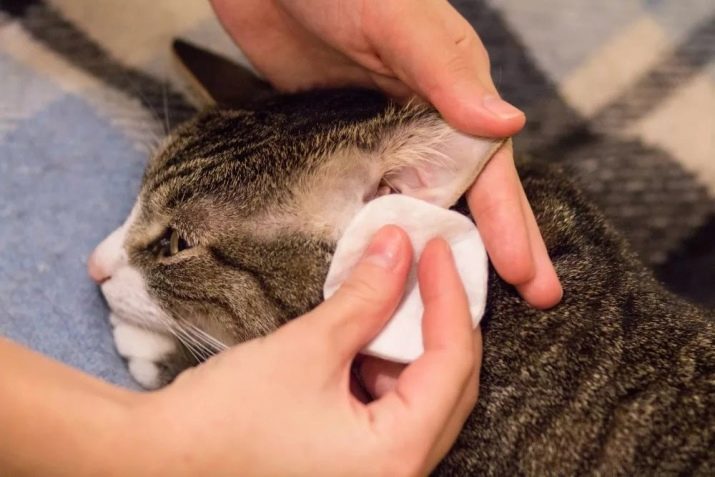
If white discharge appears in the corners of the cat's eyes, this indicates the presence of worms. In this case, you should contact the veterinarian who will prescribe treatment, select the correct dose of the drug and its frequency. Pixiebob needs fresh air: this handsome man cannot be locked in four walls, thinking that he will be constantly active and healthy. It is not enough to ventilate the room by opening the vents: it is just walks in the fresh air that are needed.
As for the climate, the short-tailed elves can easily endure both heat and cold. It is often necessary to walk with the cat outside, the duration of the games on average can be from 15 minutes to half an hour. Among other hygiene rules, claws should not be forgotten. They are trimmed as needed, with particular attention to the rudimentary toes, where they do not grind and can hurt the animal when walking.
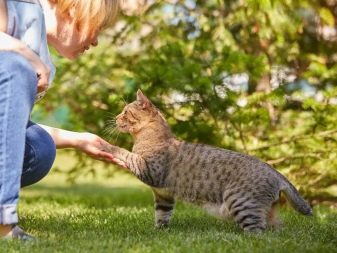
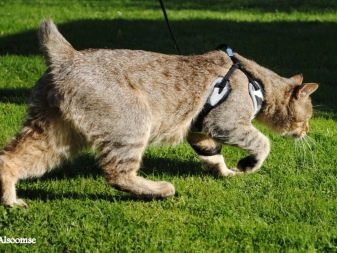
There is no need to cut the wool; you can purchase special shampoos for bathing. Rarely, cats have hypertensive cardiomyopathy (thickening of the left ventricle of the heart). But if you take proper care of your pet, the prognosis will be favorable. Once a year, breeders test animals for cardiomyopathy. That is why, as the animal is often shown to a specialist, its health will depend. An ultrasound examination helps to identify this disease.
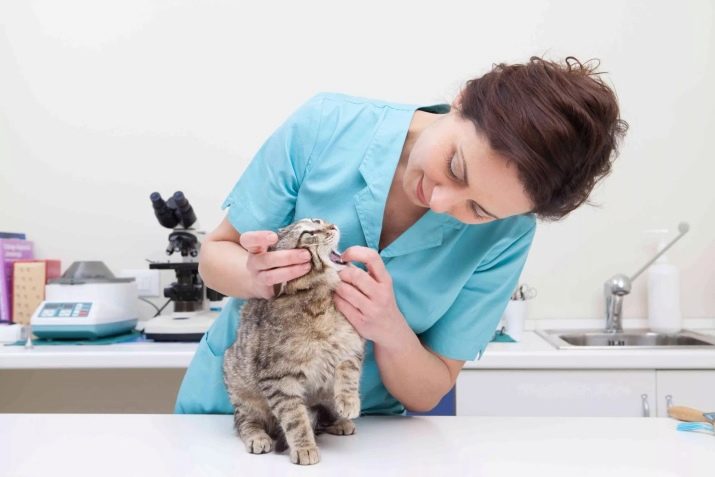
Nutrition
The key to the health of the domestic lynx is its weight. It is necessary to feed it twice a day, choosing the best commercial dry type feed.Unlike some pets, the Pixie Bob is unpretentious in the choice of food and will not allow himself to quietly strike in anticipation of his favorite treat. The type of feed should be different: the animal should not eat exclusively industrial feed; natural food should also be included in the diet.
The choice of this or that product should be deliberate, because the body of both a kitten and an adult cat cannot digest carbohydrates. The diet should correspond to different age periods. Despite a good appetite, it is necessary to dispense food in portions, taking into account the recommended norms for each age. The diet should include low-fat chicken or turkey.
In addition, you need to feed the Pixie Bob with offal, it is important that he receives cereals, vegetables, dairy products and fish. In order to compensate for the lack of nutrients that are not in the cat's food, he needs a vitamin and mineral complex.
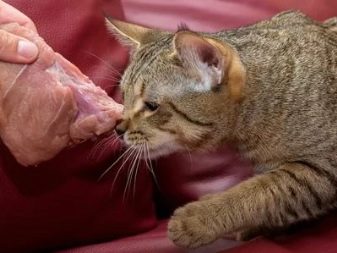
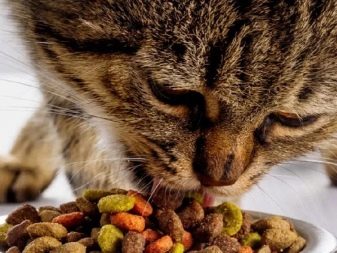
Kitten care
As a rule, there are rarely more than three kittens in a litter. Moreover, in comparison with other breeds, these babies are larger and more active. They seem plump, but to maintain a good appearance they need daily care and constant attention of the owner. If the kitten belongs to the long-haired breed, it will have to be combed out more often. As long as the baby is near the mother, it is she who makes sure that he moves well and ate on time.
These kittens are bought when they are 3-5 months old... As a rule, by this time they have already been vaccinated and treated against parasites. The purchase of each individual is regulated by law. Bathing babies is carried out with warm water without soap or shampoo.
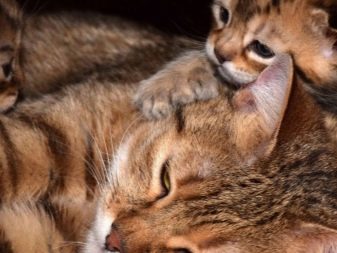
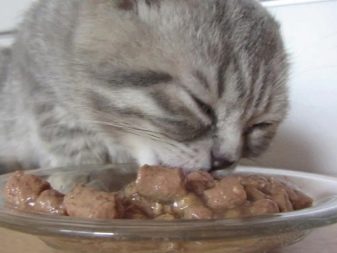
As for nutrition, we must not forget to keep track of so that there is always drinking water in the baby's bowl. You can feed it with chopped lean meat, mixing it with porridge in a 3: 1 ratio. Seafood should be given at least once a week, like eggs and cottage cheese. The frequency of feeding kittens should be at least 5-6 times a day.
At the same time, one should not forget about fresh herbs, which are purchased in a specialized store. As the baby grows, the frequency of nutrition is changed and gradually brought up to three times a day. The adult is fed twice (morning and evening). You can train your kitten to eat at certain times. Food is not given out of measure, pouring a full bowl. This can harm the health of the baby.
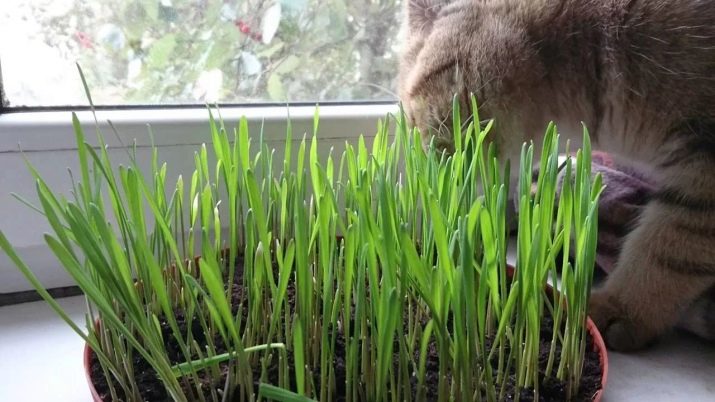
For the characteristics of pixiebob cats, see below.
































